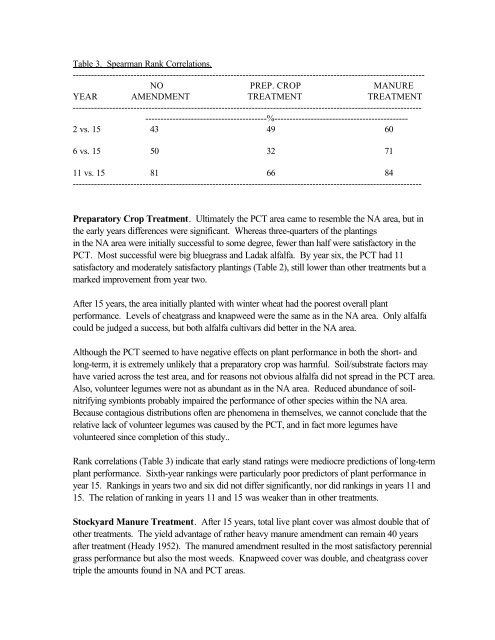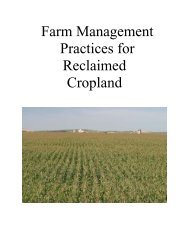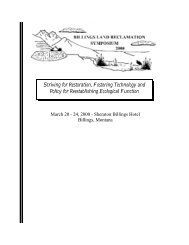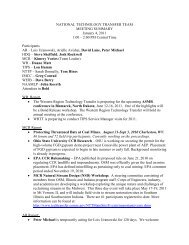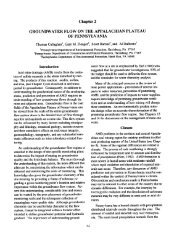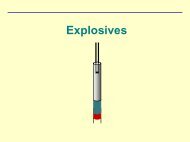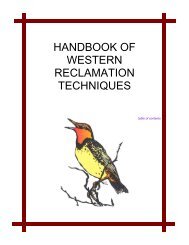Revegetation - OSM Technology Transfer - Office of Surface Mining
Revegetation - OSM Technology Transfer - Office of Surface Mining
Revegetation - OSM Technology Transfer - Office of Surface Mining
Create successful ePaper yourself
Turn your PDF publications into a flip-book with our unique Google optimized e-Paper software.
Table 3. Spearman Rank Correlations.<br />
--------------------------------------------------------------------------------------------------------------------<br />
NO PREP. CROP MANURE<br />
YEAR AMENDMENT TREATMENT TREATMENT<br />
-------------------------------------------------------------------------------------------------------------------<br />
----------------------------------------%--------------------------------------------<br />
2 vs. 15 43 49 60<br />
6 vs. 15 50 32 71<br />
11 vs. 15 81 66 84<br />
-------------------------------------------------------------------------------------------------------------------<br />
Preparatory Crop Treatment. Ultimately the PCT area came to resemble the NA area, but in<br />
the early years differences were significant. Whereas three-quarters <strong>of</strong> the plantings<br />
in the NA area were initially successful to some degree, fewer than half were satisfactory in the<br />
PCT. Most successful were big bluegrass and Ladak alfalfa. By year six, the PCT had 11<br />
satisfactory and moderately satisfactory plantings (Table 2), still lower than other treatments but a<br />
marked improvement from year two.<br />
After 15 years, the area initially planted with winter wheat had the poorest overall plant<br />
performance. Levels <strong>of</strong> cheatgrass and knapweed were the same as in the NA area. Only alfalfa<br />
could be judged a success, but both alfalfa cultivars did better in the NA area.<br />
Although the PCT seemed to have negative effects on plant performance in both the short- and<br />
long-term, it is extremely unlikely that a preparatory crop was harmful. Soil/substrate factors may<br />
have varied across the test area, and for reasons not obvious alfalfa did not spread in the PCT area.<br />
Also, volunteer legumes were not as abundant as in the NA area. Reduced abundance <strong>of</strong> soilnitrifying<br />
symbionts probably impaired the performance <strong>of</strong> other species within the NA area.<br />
Because contagious distributions <strong>of</strong>ten are phenomena in themselves, we cannot conclude that the<br />
relative lack <strong>of</strong> volunteer legumes was caused by the PCT, and in fact more legumes have<br />
volunteered since completion <strong>of</strong> this study..<br />
Rank correlations (Table 3) indicate that early stand ratings were mediocre predictions <strong>of</strong> long-term<br />
plant performance. Sixth-year rankings were particularly poor predictors <strong>of</strong> plant performance in<br />
year 15. Rankings in years two and six did not differ significantly, nor did rankings in years 11 and<br />
15. The relation <strong>of</strong> ranking in years 11 and 15 was weaker than in other treatments.<br />
Stockyard Manure Treatment. After 15 years, total live plant cover was almost double that <strong>of</strong><br />
other treatments. The yield advantage <strong>of</strong> rather heavy manure amendment can remain 40 years<br />
after treatment (Heady 1952). The manured amendment resulted in the most satisfactory perennial<br />
grass performance but also the most weeds. Knapweed cover was double, and cheatgrass cover<br />
triple the amounts found in NA and PCT areas.


